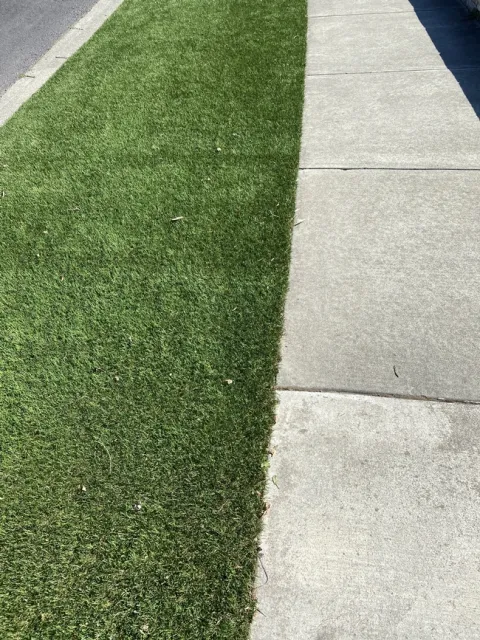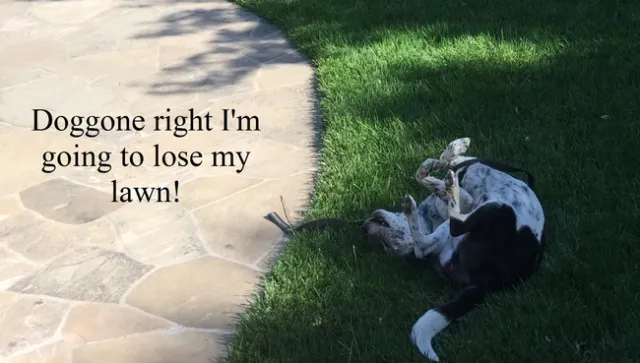Every day on my walk I'm seeing more and more people installing the fake green grass. This artificial grass is not environmentally friendly.
After 15-20 years, it gets put into the landfill because it is old. There are concerns about toxic runoff from the crumb rubber infill. That it might be harmful to people, pets, and the environment. It can get an odor build-up if it's not cleaned after pets use it. It will melt if hot charcoals from a BBQ fall on it. Or if the heat from a window creates an intense reflective light. Artificial grass is not fireproof.
It bakes in the hot sun. and heats up the surrounding area. It is hot to the touch during warm days. Dogs and kids can not play on it when its hot outside. It's plastic. Artificial grass smothers and heats up the ground underneath it. This sends the beneficial microorganisms, worms, and ground beetles screaming for their lives. Any surrounding trees that were dependent on the existing, wet, green lawn are now super stressed. The tree roots are baking in the sun. So please, if you are trying to use less water there are other alternatives.

Adjust the way you maintain your existing grass. Keep the grass taller, this naturally shades the roots. Mow the lawn by only 1/3 of its existing height, to promote healthy grass. Don't fertilize during the summer, this makes the grass thirsty. Leave the grass clippings on the lawn to decompose and naturally fertilize the area.
Encourage the roots of your existing lawn to grow deeper into the soil. Run the irrigation early in the morning (ex: 5 am) then run it an hour later at 6 am. This will ensure deep watering. The water should be getting 6-8" down into the soil. Most lawns need 1-1½" of water, per week to get the water down to 6-8". Use a screwdriver to test if the water is getting down 6-8". Fescue and ryegrass blends can be drought-tolerant with proper management.
Replace the old lawn with water-friendly types of cool-season grasses. Such as tall fescue, buffalo grass, sheep fescue, wheatgrass, Kentucky bluegrass, and fine fescue. Some of these grasses only need ¾” of water per week.
Substitute the lawn with drought-tolerant plants, ground covers, and a dry riverbed.

Nicki helping at a client's house.
All photos by Maureen Clark

